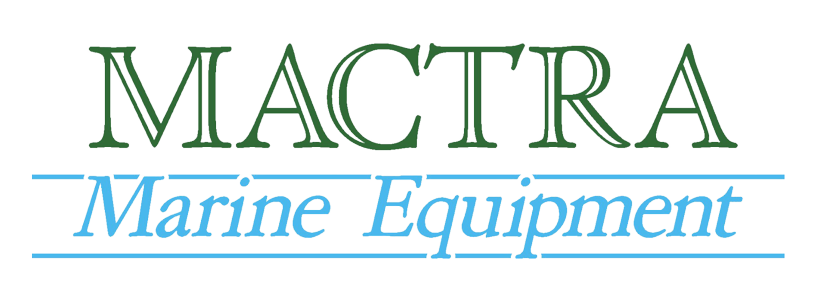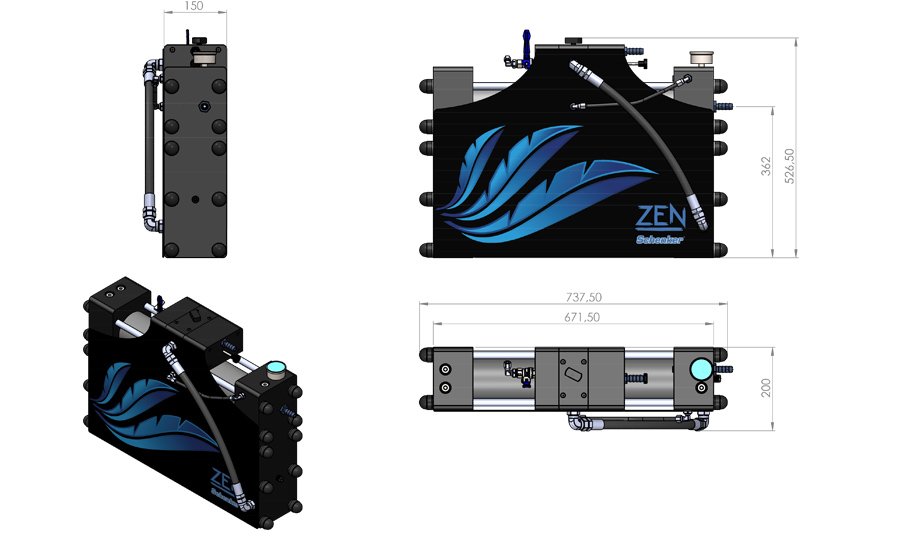How Do Watermakers Work?
How do you make fresh water from sea water?
To make fresh water you must have between 60-70 Bar of pressure. You can do this one of two ways, either using a high pressure pump to push the water through membranes. This is the traditional way of making water. This is a thirsty way of doing things as you need to power the water maker using a generator.
The modern way of making water is based on a new functioning principle that removes the need for high pressure pumps. Schenker watermakers make use of a patented device (Energy Recovery System) that amplifies the pressure supplied by low pressure pumps and recovers most of the spent energy, thus enabling very high energy efficiency. The consumed energy used is up to 80% lower than a traditional system.
Schenker ERS diagram
What technology does Schenker use?
Schenker watermaker are able to achieve this is buy using a low pressure pump which brings the water into the watermaker between 6-7 bar, this is then increased 10 fold using a the Energy Recovery system as described below.
As a consequence, Schenker watermakers of small and medium capacity can also be powered directly from the vessel's service batteries. The ERS is amazingly reliable. It doesn't make use of traditional o-rings and is basically a maintenance free device. The o-rings, in the latest 2.0 version, have been replaced with special "friction bands" made with a special material produced using nanotechnology. This material exhibits a very low friction coefficient, and an incredible resistance to abrasion, up to 15 times greater than that of carbon steel!
How much water should you need?
The ideal water maker should provide the daily fresh water needs of the boat in about 2 - 3 working hours. The daily fresh water demand is based on the number of people onboard and the type of boat. Typical fresh water demand on a sailing boat is about 30 - 40 lit/day per person, whereas it is 50 - 60 lit/day per person on a powerboat or catamaran. For instance, on a sailing boat with a crew of 5 people the estimated daily fresh water need is 150 - 200 lit. Therefore the ideal watermaker capacity is 50 - 150 lit/h. See our full range of Schenker water makers here.
Schenker ZEN 150
Testing Water Quality!
Schenker water makers produces very high quality fresh water. The fresh water produced is very pure (TDS - Totally disolved solids of about 200-300 ppm) but doesn't need to be reintegrated with salts if it is used for a limited period of time (for instance some months). For longer periods consider fitting post filters that reintegrate the salt. The reverse osmosis technology moreover allows to reject up to 99.99% of bacteria, cysts, algae and mould spores. A good and safe fresh water. You can test the water quality by using a TDS meter.
Is there any maintenance?
Maintenance is very easy and affordable. The most important operation is the final flushing that has to be made, preferably after all working sessions. This operation can be performed automatically through the remote panel. The sea water filter has to be replaced regularly, typically every 4 - 5 weeks in average conditions. It is, anyway, a commercial low cost filter. The active carbon filter has to be replaced once per year. If the water maker is being left for more than 2 weeks without a flushing programme then it will be necessary to ‘pickle’ the water maker with biocide to avoid growth forming in the membrane.
The reverse osmosis membranes are pretty expensive, but they last on average 6 - 7 years if the maintenance manual's instructions are carefully followed.
Find out more about our range of Schenker Watermakers here.


